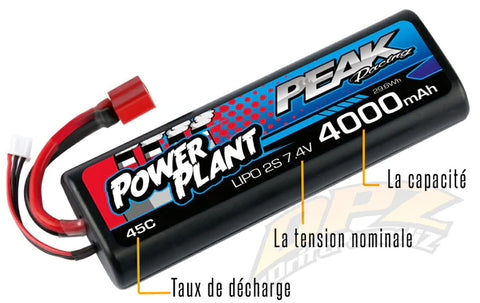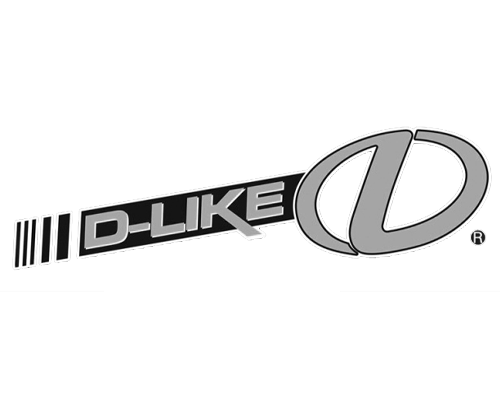RC batteries
Lipo batteries: performance and maintenance for RC Drift
Lithium-polymer batteries, also called Lipo batteries, are today the only batteries used in Drift RC thanks to their small size, lightness and especially their high performance. Watch our video on the use and maintenance of batteries.
What do the figures mean on a Lipo battery?
The figures registered on LIPO batteries allow us to understand their properties. Here are the most important settings of your battery:

Okay, here is the reformulated text to improve clarity and readability:
The voltage of Lipo batteries
• Nominal voltage : A LIPO cell has a nominal voltage of 3.7 V (or 3.8 V for HV batteries).
• Cell configuration : For example, a 14.8 V battery has four cells mounted in series (4S), because tensions add up.
In RC Drift, only 2S batteries are used.
|
The battery voltage influences the speed of rotation of the electric motor, which determines the speed of your radio -controlled vehicle. For brushless engines, the power is evaluated in KV (towers per minute by volt). For example, a 3,500 kV engine will run 3,500 rpm per volt. Thus, with a LIPO 2S battery, it will run at 25,900 rpm, and with a 3S 38,850 rpm battery, etc.
HV batteries (high voltage)
It is the new generation batteries that allow more power and more capabilities. You will load your battery at 8.7 V instead of 8.4V. The ideal is to have a Li-HV compatible charger (Lipo High Voltage), but it is not compulsory. You will not just charge them thoroughly, but you won't damage them.
The capacity
The capacity of a battery determines how long you can use it before it discharges. It is expressed in milliampères-hour (MAH). The higher the value, the greater the car autonomy. In RC Drift, a 4000mah battery with the electronics of the RTR MST kit allows you to drive for about 20 minutes.
The discharge rate
The value C Indicates the maximum capacity and without danger of continuous discharge of your battery. For example, on a 4000 mAh battery with a 45C discharge rate, you can unload up to 202.5a continuously. Always choose a discharge rate much higher than your maximum continuous discharge.
How to take care of my Lipo battery?
The precautions to be taken
• Get rid of a Lipo battery that has started to swell immediately, which is damaged or pierced.
• Do not try to load a damaged battery.
• Do not leave the battery in a vehicle or directly exposed to the sun.
• If your LIPO battery caught fire, do not turn off the fire with water but prefer sand or a fire extinguisher for electric lights.
Load a Lipo battery
• New lipo batteries are loaded at 40% of their total capacity for optimal storage.
• Do not use the fast charging function during the first charging cycles.
• Never unload a battery below 3.2 volts per cell.
Storage and transport of Lipo batteries
• Store your batteries in a ventilated, fresh and dry place, with a temperature between 5 ° C and 27 ° C.
• For transport, make sure that the ambient temperature is between 5 ° C and 50 ° C and that the batteries are protected from the sun.
FAQ: frequent questions
1. How do I know if my battery is damaged?
If your battery starts to swell, flee or have cuts, it is probably damaged.
2. Can I use a LIPO battery in extreme conditions?
LIPO batteries should be used under moderate temperature conditions to guarantee their safety and performance.
3. What are the advantages of HV batteries compared to standard batteries?
HV batteries (high voltage) offer more power and capacity, with a maximum load of 8.7 V instead of 8.4 V.
Storage advice
• Store your batteries in an anti-fire load bag for more security.
 Nouvelle vidéo
Nouvelle vidéo
 Nouvelle marque
Nouvelle marque






















































